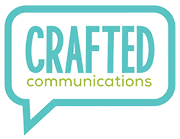Media relationships are crucial for any Public Relations professional, as they act as the bridge between your clients and their audience. Establishing strong media relations skills is not just about securing coverage, rather it’s about crafting a story that will further improve brand awareness and credibility for your client. With rapid changes happening within the media landscape, how do we secure and maintain these relationships? It may feel overwhelming on where to start, but with these few quick tips, you’ll be able to develop the skills needed to establish genuine connections that will be mutually beneficial for all parties involved.
Media Monitoring: The first step in establishing media relationships is to monitor the media. It’s essential to understand what’s happening in the media before you even begin your outreach. What are the current trends and how can your client fit into them? Which reporters are covering your industry and competitors? How is your brand being perceived in the media? Once you answer these questions, you can begin building out a robust media list with relevant reporters that reach your target audience.
Newsletters: Another great way to stay informed about trends and reporter interests is to subscribe to journalist newsletters. Once you identify your target media, research to see if they publish an ongoing newsletter or Substack, like Aly Walansky and Jill Schildhouse. In these newsletters, journalists often share their pitch preferences, including when to send pitches, what to include, etc., along with a list of topics they’re writing about that week. Plus, they frequently host webinars to provide further insights into effective pitching strategies, such as tips & tricks for holiday pitching or how to navigate the media landscape. Understanding the reporter’s perspective is helpful to ensure that your pitches align with their specific preferences.
Reporter Beat: Before reaching out to a reporter, understand their specific area of coverage, otherwise known as their beat. Sending news about a new grocery product to a reporter that specializes in tech news wouldn’t be an effective use of your time or theirs. You can familiarize yourself with the reporter’s beat by reading their past articles and tailor your pitch accordingly. While you can approach reporters from different beats with the same product, ensure that your pitch aligns with each of their interests and trends within their industry. Reporters receive an overwhelming number of pitches each week, so it’s important to only send them information that is relevant to them, otherwise, they likely won’t consider reading your email next time around.
Media Samples: Offering media samples is another effective way to establish media connections. Ensure that the reporter is willing to accept samples and that they align with their area of interest. To achieve this, maintain clear communication with the reporter by providing specific details about the contents of the sample. Sending a media sample to a reporter that likely won’t cover is counterproductive, wasting your client’s time and money. If the sample aligns with their beat, it can be a fun and creative way to build that relationship and simultaneously garner coverage for your client.
Reliability: Once you begin building media relationships, you’ll quickly learn that reliability is key! As the reporter’s news source, it’s important that they can rely on you to answer any questions or needs. This may involve jumping on a quick call to discuss details of a press release, coordinating a client interview, or sending them the necessary assets for their story. If you’re responding to a specific reporter request, make sure you can fulfill the requirements listed and share your responses ahead of the reporter’s deadline. If they know they can depend on you, the reporter will be more likely to engage with you on future announcements or stories.
Be Personable: Remember that reporters are human too. You don’t need to sound like a robot in all your pitches. Take the time to get to know your contact and personalize your pitches to them. You can also engage on social media platforms like LinkedIn or Instagram to stay updated. For example, congratulate them on a new role, or ask them how they enjoyed their recent vacation. Just be sure to only pitch them via social media if they’re open to it, or you have an existing relationship with them. A little conversation can go a long way in establishing authentic connections.
With that being said, building media relationships takes time and effort. Incorporating these strategies into your everyday media relations activity will not only help you secure coverage, but will build relationships that are mutually beneficial.

